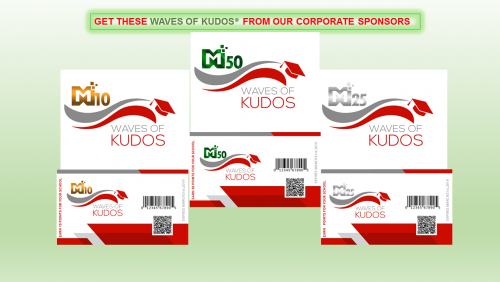
Maggie's F-W | Our First Flagship: Waves of Kudos®Collectible Educational Labels
Waves of Kudos Four Pillars:
- Fairness
- Learning
- Use of Technology
- Success
Rule of Thumb 1:1
One Computer: One Student.
OPEN INVITATION TO:
The Industrial & Commercial Sector in the United States of America
Fellow officials of each sector: Each of you is invited to join efforts and participate with all stakeholders, in our most relevant enterprise in the whole history of education in the United States of America.
Right now, we are Blooming our Waves of Kudos program: 40+ | 40+ | 4+
This plan is focused in provide 40+ millions of Technology Devices, when educating, to 40+ millions of students in their respective schools, in the next 4+ decades.
Our work is to propel those above mentioned four pillars!
Complementary Information: byrosesonly@gmail.com
Our Inspiraration Today

What Are Waves of Kudos® Collectible Educational Labels?
Waves of Kudos® Collectible Educational Labels is a marketing program initiated by the Maggie's F-W Company in the United States of America. This program allows schools to earn Academic Technology Needs, and in "some specific cases" acquire other school academic needs, in exchange for Educational Labels or Universal Product Codes (UPCs) on associated products, with a very specific goal: To break the digital divide in each of the United States of America Schools Districts.
This Is Why Officials Of Maggie's F-W Are Welcoming Sponsors
Subscribed Industrial/Commercial Institutions will provide the support needed for our children to get, at students own efforts [getting/collecting UPCs Waves of Kudos®Labels], their Technology needs for their K-12 education; while trying to break, the Educational Digital Divide--if existing--in their schools.
This extraordinary opportunity will provide the needed technological learning tools to:
103.959 Schools, and within them 3,100.000 + Teachers (National Center for Education Statistics, 2016). Educators that, in fact, will be helping them to achieve this cornerstone.
Thus, this undertaking will support:
50 + Millions of Enthusiastic Students [50.4 million / National Center for Education Statistics, 2016] and at least 100 + Millions of Thankful Parents.
To know about UPCs Waves of Kudos®Collectible Labels project, visit Maggie's F-W homepage/Waves of Kudos video button, and/ or clicking on the following hyperlink: https://youtu.be/yhGWURyTDXs
By the same token, to take a deep look about this undertaking, visit the website page at: Maggie's F-W (maggiesfw.com)
On the other hand, additional information about "Understanding the Digital Divide in Education" can be found on the following hyperlink: Maggie's F-W - Homepage (maggiesfw.com), which, as a matter of a fact, is Maggie's F-W/ "E-Donate" website page.
THANK YOU VERY MUCH FOR YOUR SUPPORT!!!! 
Waves of Kudos from all of us!!!! 
As a matter of fact, and according to the following excerpt, any stakeholder should be worried that something like this might be happening, right now and every where, in the United States of America:
School Districts Are Going Into Debt To Keep Up With Technology
"In Silicon Valley, cash-strapped schools are selling bonds to buy student laptops"
"This story about school debt is part of the series Districts in Debt, which examines the hidden financial pressures challenging American schools."
.png)
In a combined biology/literature class, students at James Lick High School complete assignments using school-supplied Chromebooks.
Amadou Diallo for The Hechinger Report
SAN JOSE, Calif. — At James Lick High School the slate-gray Chromebooks are ubiquitous. Rolling cabinets stocked with dozens of the laptops sit in classrooms where teachers assign them to students for everything from researching hereditary DNA to writing essays. In this majority-Latino school of 1,100 students, 84 percent of whom qualify for free or reduced-price lunch, a federal measure of poverty, school principal David Porter says making the devices readily available is a significant part of an effort to develop digital literacy for students who might otherwise be left behind.
Nationwide, one out of four teenagers from low-income households lacks access to a home computer and, overall, Latino students have less access than their black and white peers, according to a 2018 survey by the Pew Research Center. “We’re doing a disservice if we’re not teaching the next generation how to use technology. Students being able to access it is critical,” Porter says.
Using computers and online resources in the classroom is part of a growing trend in education. What’s unusual about James Lick’s Chromebook program isn’t the laptops themselves, but how they were paid for. In this school on the eastern edge of Silicon Valley, just a 20-minute drive from Google’s Mountain View headquarters, the district has put these laptops into students’ hands by going into debt, authorizing a $16.2 million sale of general-obligation bonds intended almost exclusively for the laptop purchases.
It’s part of an emerging shift in how schools are thinking about paying for technology, one that city and county officials say is necessary because of inadequate state funding and a highly decentralized education system that leaves smaller, less affluent districts with few other options. Yet it’s an approach that some observers say not only violates the principle of taxpayer-financed debt, but exacerbates inequities for schools in communities lacking the municipal wealth of their higher-income counterparts.
Bonds have been a long-standing source of revenue for public education. School districts sell the bonds to investors for an immediate influx of cash, with an agreement to pay back the money to bond holders over an extended period of time, commonly 20 to 30 years, with interest. Traditionally, bonds have been used to pay for capital assets that hold their value for decades. Issuing a 30-year bond to finance a new school building makes sense, says Ross Rubenstein, a professor at Georgia State University who specializes in public finance and education policy.
Using long-term debt to pay for technology that may be obsolete in a couple of years, he says, is “like taking out a mortgage to buy groceries.” Yet that is precisely what school districts across the country, including some in California, Texas, Minnesota and Kansas, have done in a desperate push to get technology into classrooms.
“One of the fundamental ideas behind debt is you want to try and match the life of what you’re purchasing to the life of the debt,” Rubenstein says.
Related: School districts’ uphill battle to get good deals on ed tech
In 2008, the San Diego Unified School District won voter approval for $2.1 billion in bond sales. While the majority of that money was for school maintenance and construction, the district allocated some of those funds for technology, buying more than 21,000 iPads. With bond payments stretching out as far as 40 years, it’s been estimated that some of these $400 iPads may ultimately cost the district more than $4,000 each.
"Using long-term bonds for tech are “like taking out a mortgage to buy groceries,”
Ross Rubenstein, a professor at Georgia State University.
An attempt by the Los Angeles Unified School District to use a long-term bond program to buy student iPads in 2013 resulted in not only high costs for the devices, but also separate SEC and FBI investigations into the legality of the bond spending and possible corruption in the vendor bidding process.
Yet, the 2014 bond sale used to buy Chromebooks for James Lick and the rest of the East Side Union High School District schools has a much different structure. Designed exclusively for technology purchases, these bonds have much shorter payment terms. And because the laptops will obviously need to be replaced every few years, this voter-approved bond measure authorized a recurring series of short-term bond sales — future offerings commence after current obligations are paid off — the last of which will come due in 2035. This structure provides for future financial stability in a fiscally responsible manner, according to district superintendent Chris Funk.
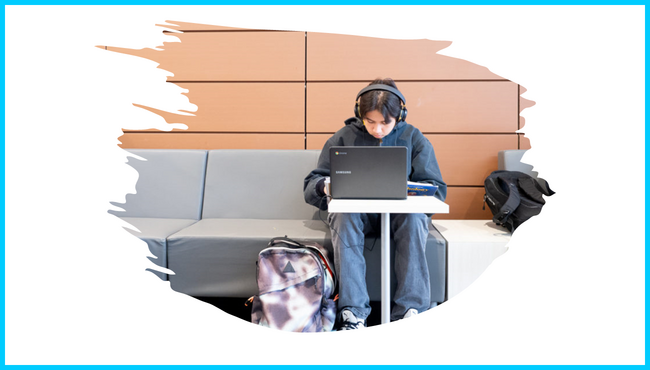
During a free period, Juan Negrete, a 17-year-old senior at Yerba Buena High School, works on an assignment using a school-supplied Chromebook.
During a free period, Juan Negrete, a 17-year-old senior at Yerba Buena High School, works on an assignment using a school-supplied Chromebook.
By 2014 the district had won approval for $116 million in short-term bonds sales, including the $16.2 million for the Chromebooks, software licenses and the infrastructure needed to maintain them.
“In a traditional long-term bond the interest would be close to $100 million,” Funk says. “The way we’re doing it dropped the interest down to like $25 million because we’re paying off the debt every 4 to 5 years. That gives a school district like ours a source of revenue for the next 20 years that we can rely on for technology.”
Finance experts agree that school bonds offer substantial savings over most other types of borrowing, given that bonds are backed by a reliable source of funds: property taxes.
“There is a lower cost in using short-term debt rather than going out and getting a high-interest lease with a [laptop] vendor, for example,” says Bart Hildreth, a professor at Georgia State University who studies municipal finances. But bonds are not free money, he cautions. “The bond transaction itself has up-front costs. When you issue debt you have to get a bond rating, get a lawyer, investment banker, broker dealers and prepare the official statement.”
Borrowing that $16.2 million dollars for the Chromebooks cost the East Side Union district an additional $357,000 in these up-front costs on top of what appears to be roughly $1.7 million in interest payments, according to the bond filing.
The best option, experts say, is to pay for things like laptops with cash, not debt.
Related: The ‘dirty secret’ about educational innovation
Reference
Diallo, A. (2019). School districts are going into debt to keep up with technology. Retrieved from https://hechingerreport.org/school-districts-are-going-into-debt-to-keep-up-with-technology/
MAGGIE'S FW | WAVES OF KUDOS® COLLECTIVE EDUCATIONAL LABELS: DEFINITIONS AND REMARKS
ACCOUNT HOLDER: Any school in the United States of America, including [the CNMI (commonwealth of the Northern Mariana Islands), Guam, and Puerto Rico].
USER [ LICENSEE]: Any commercial institution.
LICENSE: Product/Service Licensing that guarantees the use, from a third party, for one or more of Maggie's F-W products yearly. License is auto renewable every year.
PRODUCTS (BRAND NAMES)[ALSO CALLED " EDUCATIONAL COLLECTIBLE LABELS"]:
These Brand Names are:
- ORIGINALS®
- TRADING LABELS®
- THE STAMPS®
- THE ALBUMS®
VENDOR [LICENSOR]: MAGGIE'S FW.
LICENSEE SPECIAL REMARKS:
- License is offered to any user in the United States of America.
- Users may buy one or more annual licenses.
- Any license covers all the geographic where the user performs its businesses.
- User develops all the necessary commercial infrastructure [e.g., printing labels] to promote its products through our product licensing.
Important: Additional information is found in: Maggies's F-W Services Agreement.
LICENSOR SPECIAL REMARKS:
- Vendor remains in permanent contact with the commercial institutions/partnerships.
- Vendor keeps an updated list [catalog] of state of the art available technology products and services [see School/Supply/Products: Maggie's F-W (maggiesfw.com)].
- Vendor contacts officials of every school, in any district area, where the user performs its businesses.
- Vendor's responsibility includes to promote directly their Waves of Kudos® products, to any student, in the user's aforesaid geographic location/area.
- Vendor uses technological tools to promote the effectivity of the four above-mentioned products.
- Vendor grants rewards to students for their achievements when gathering and/or collecting labels.
- Vendors might visit schools to promote Waves of Kudos services.
Important: Additional information is found in: Maggie's F-W Services Agreement.
TECHNOLOGICAL/PROPRIETARY TOOLS
Maggie's F-W | Waves of Kudos® will use the below itemized technological tools to encourage its services:
Note: A description of these above-mentioned tools is described, when clicking, on each of them.
INTELECTUAL PROPERTY [IP]: Maggie's F- W | Waves of Kudos®Product/Service Licensing was created and is owned by Maggie's F- W's Founders.
WAVES OF KUDOS® COLLECTIVE EDUCATIONAL LABELS
A. MAGGIE'S F-W | ORIGINALS®
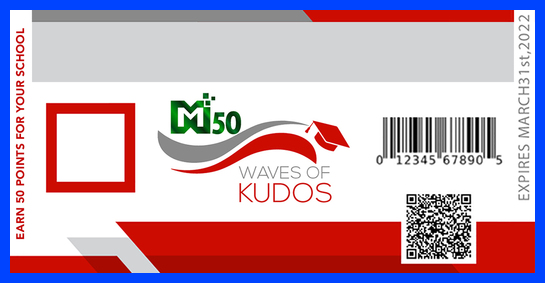
BLOOMING NOW
Size: Letter -- Portrait [1.5 inches by 0.75 inch] for its redeeming sheet.
- Users [enterprises] will use the above drawn rectangular-gray-area to ask any academic question, in any subject, relevant to K-12 education. This question will be addressed to the final buyers [students] of their products.
- Participants students [final buyers] will turn-in those answers to the Principal's office.
- Users also, will use the red-squared-area to insert any image related to the academic question.
- On the other hand, the Principal of the participating school, must attach those answers to the UPCs' package.
- Subsequently, the Principal of the school will send those answers to the Vendor [Waves of Kudos] as well.
- In the end, final buyers may gain some surprises. Those surprises are additional to those the official of the school's shopper acquires, when shopping in our website, after he/she uses the previously collected UPCs by the students.
- Instructions to win more surprises, will be send to the participant student after he/she is invited to join Quacktelegram.
Example
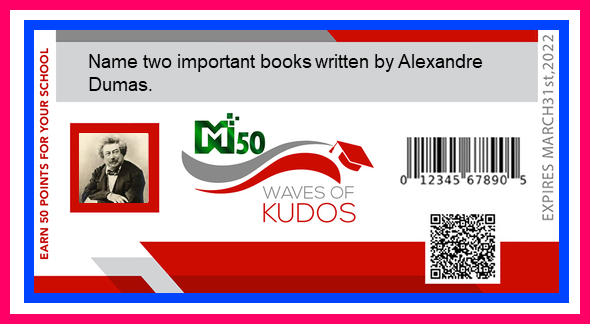
- By the same token, label can be printed on its products and/or inserted within.
Waves of Kudos Redeeming Sheet Sample: https://maggiesfw.com/en/static_pages/item/waves-of-kudos-redeeming-points-sheets-the-originals
Place an order: Go to our E-Commerce Platform and the system will guide you step by step. Please click on this hyperlink: Maggie's F-W (maggiesfw.com)
B. MAGGIE'S F-W |TRADING LABELS®
Presenting the Presidents of the World [ 5 per each country of the world]:
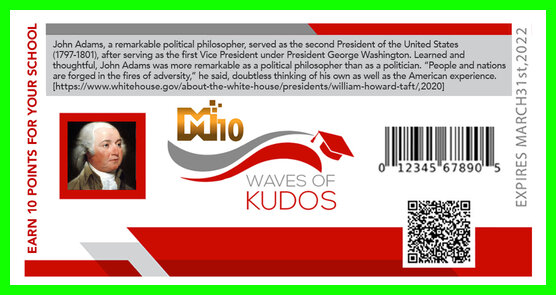
Sizes:
[ 5.0 inches x 3.5 inches ]
Note: Label can be printed on its products and/or inserted within.
Place an order: Go to our E-Commerce Platform and the system will guide you step by step. Please click on this hyperlink: Maggie's F-W (maggiesfw.com)
C. MAGGIE'S F-W | THE STAMPS®
Presenting the Flags of the World [Independence Day of each country is included as well].
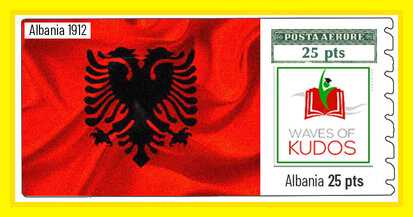
BLOOMING NOW
Sizes: Tabloid and Horizontal Letter [ 3 inches x 1.5 inches ] for their redeeming sheets.
Vertical Letter [ 2.6 inches x 1.3 inches ] for its redeeming sheet.
Note: Label can be printed on its products and/or inserted within.
Waves of Kudos Redeeming Points Samples [The Stamps]: Maggie's F-W - Homepage (maggiesfw.com)
Place an order: Go to our E-Commerce Platform and the system will guide you step by step. Please click on this hyperlink: Maggie's F-W (maggiesfw.com)
D. MAGGIE'S F-W | THE ALBUMS® THE THREE KINGDOMS
Presenting the Animal Kingdom:

Presenting the Vegetal Kingdom:
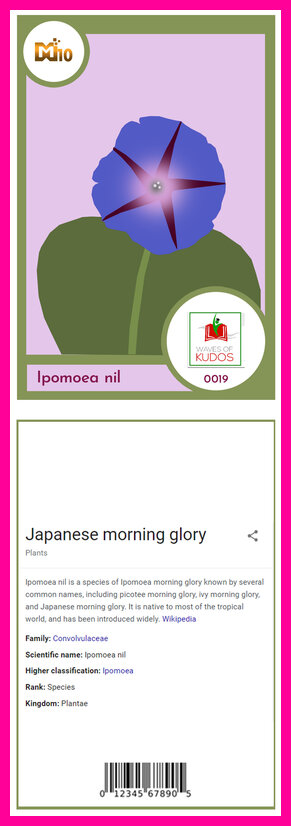
Presenting the Mineral Kingdom:

Sizes:
[3.5 inches by 5 inches]
Note: Label can be printed on its products and/or inserted within.
The Album Collections Educational Book: The Three Kingdoms

Place an order: Go to our E-Commerce Platform and the system will guide you step by step. Please click on this hyperlink: Maggie's F-W (maggiesfw.com)
Effective date: this Maggie’s F-W | Waves of Kudos®--Our First Flagship is effective and was last updated on October 17, 2022.
